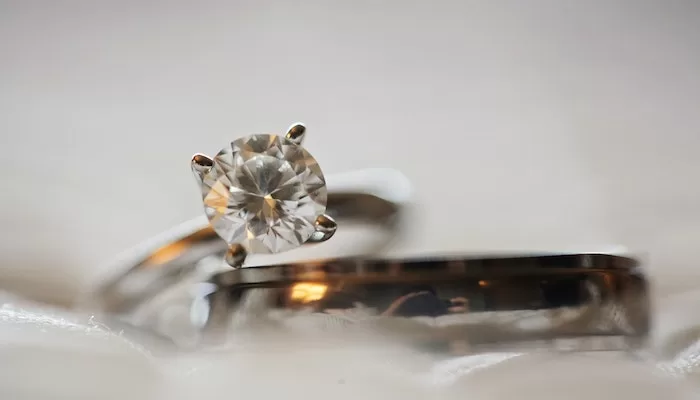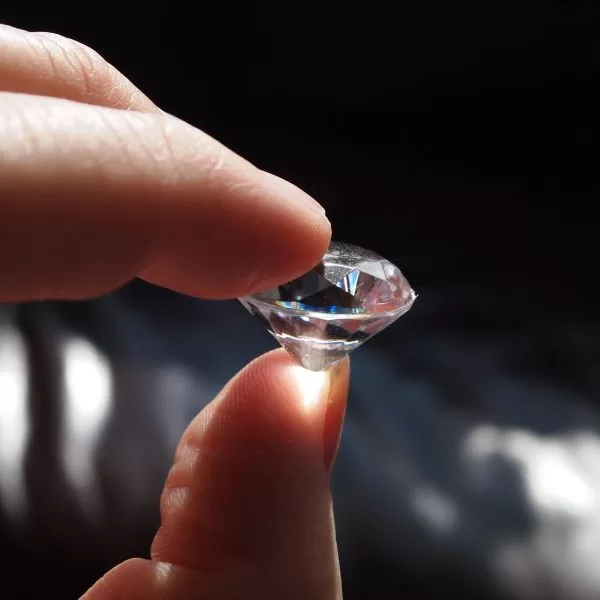Lifestyle
The Jewellery Trend Of 2023: The Lab-Grown Diamond

Diamonds have always stood out among other gemstones for obvious reasons – their appearance, their extreme hardness, and of course, their worth. They have always been statement jewellery. However, there seems to be a new trend that has emerged in the jewellery industry – the use of lab-grown diamonds in place of natural diamonds.
Lab-grown diamonds has become more and popular in the jewellery world. People are beginning to tilt more towards using lab-created diamonds, not just for engagements and weddings but other purposes. This popularity can only increase as more people get exposed to the amazing qualities that come with lab-grown diamonds. Fashion icons and celebrities like Meghan Markle, Lady Gaga, and Emma Watson have caught on to lab-grown diamonds on different occasions.
If you are really not sure about lab-grown diamonds, then you are at the right place. In this article, we will discuss what lab-made diamonds are and the factors driving their popularity.
What is a lab-grown diamond?
A lab-grown diamond is what several people in the industry call ‘engineered diamond,’ ‘man-made diamond,’ or ‘cultured diamond.’
It is a type of diamond grown in highly controlled laboratory environments with the use of progressive technological processes which create conditions identical to those from which natural diamonds emanate. To put it simply, a lab-grown diamond is a real diamond that is produced inside a laboratory by scientists and experts. For example, BIRON® is a global supplier of these lab-grown diamonds.
Before we go on, let us get this straight: the fact that a diamond is lab-grown does not mean it is of inferior quality! In fact, the diamond grown in a laboratory is identical to the natural counterpart when you consider the physical, optical and chemical qualities that come with it. The lab-created diamond emits the same lustre, fire and scintillation that the natural diamond showcases.
The major difference between a lab-grown diamond and a natural diamond is in their origin and availability. Natural diamonds are limited in supply. But lab-made diamonds can be easily mass-produced within a short period. This makes their production sustainable.
How are Lab-Grown Diamonds Made?

Source: Pxhere
Generally, there are two major ways lab-grown diamonds are made. They include:
- Chemical Vapour Deposition (CVD);
- High-Pressure High-Temperature (HPHT).
Chemical Vapour Deposition (CVD) Process
The Chemical Vapour Deposition (CVD) process is characterized by placing the diamond seed in a plasma reactor chamber. A mixture of different gasses containing carbon is then released into the reactor at low pressure. Microwaves are also brought on board to heat the gases and release plasma. The temperatures skyrocket, gas molecules disintegrate, and carbon atoms and the seed bond. As the carbon atoms bond with the diamond seed, they crystallize, and the seed grows layer by layer until it eventually forms a rough lab-created diamond.
High-Pressure High-Temperature (HPHT) Process
On the other hand, the High-Pressure High-Temperature (HPHT) process entails using huge mechanical presses to apply a lot of pressure and temperature to the diamond seed. Under these conditions, the carbon atoms grow layer by layer until the rough lab-grown diamond emerges.
Why lab-grown diamonds?
Surely, if many people are tilting toward using lab-grown diamonds, there must be a reason. In fact, several reasons, some of which include:
Affordability
Lab-grown diamonds are much more affordable than the natural diamonds when similar size and quality are compared. This makes them excellent for various purposes, including everyday jewellery, gifting jewellery and occasion jewellery. You can look dazzling in your lab-created diamond without spending as much as you would for a natural one. It is notable that lab-made diamonds can cost you almost 30% less than natural diamonds. There is better transparency that results in fair pricing with lab diamonds. That is a massive plus!

Source: https://en.photo-ac.com/
Conflict-Free
Lab-grown diamonds are cultivated within the confines of a lab; this means issues that stem from evils like unethical and inhumane mining conditions, poor wages, child labour, and blood diamonds are nullified to a large extent.
Eco-friendliness
One of the major advantages of lab-grown diamonds is that they do not contribute to the depletion of “Mother Nature.” One carat of a mined diamond takes away approximately 250 tons of earth, emits 140 lbs of Carbon Dioxide and requires 120 gallons of water, according to The Diamond Foundry. Now that is a lot of strain on the ecosystem, and considering that many other factors are affecting the ecosystem, the environment is at risk. Lab diamonds are typically more sustainable because no mining is involved, and the wastage of water, electricity and other resources is avoided.
Conclusion
Undoubtedly, lab-grown diamonds have come to stay, and their popularity and credibility can only increase. With them, you can take your jewellery game a notch higher without breaking the bank.
So, what are you waiting for? Join the trend of happy jewellery users who are maximizing all the benefits of lab-grown diamonds!






















































